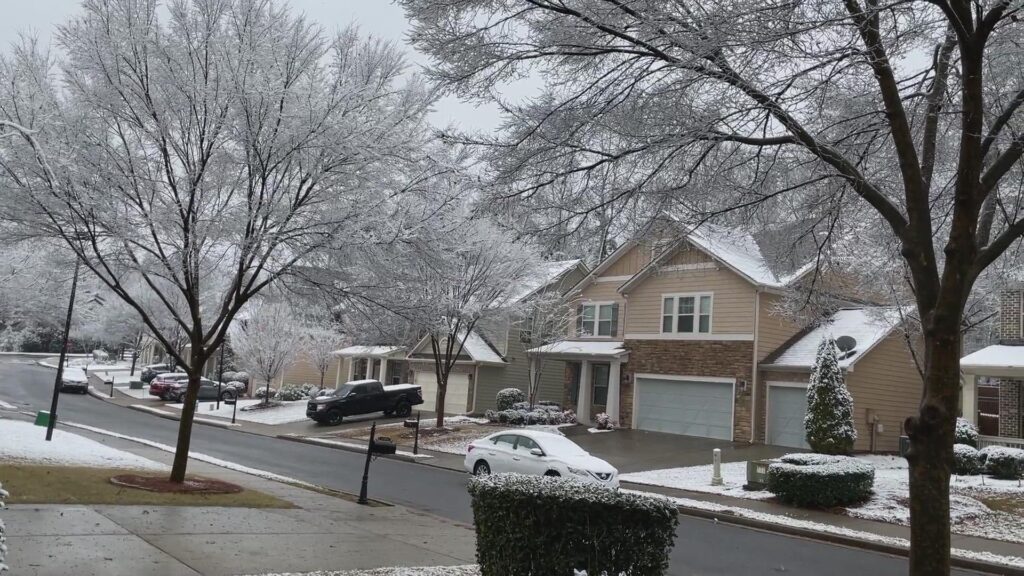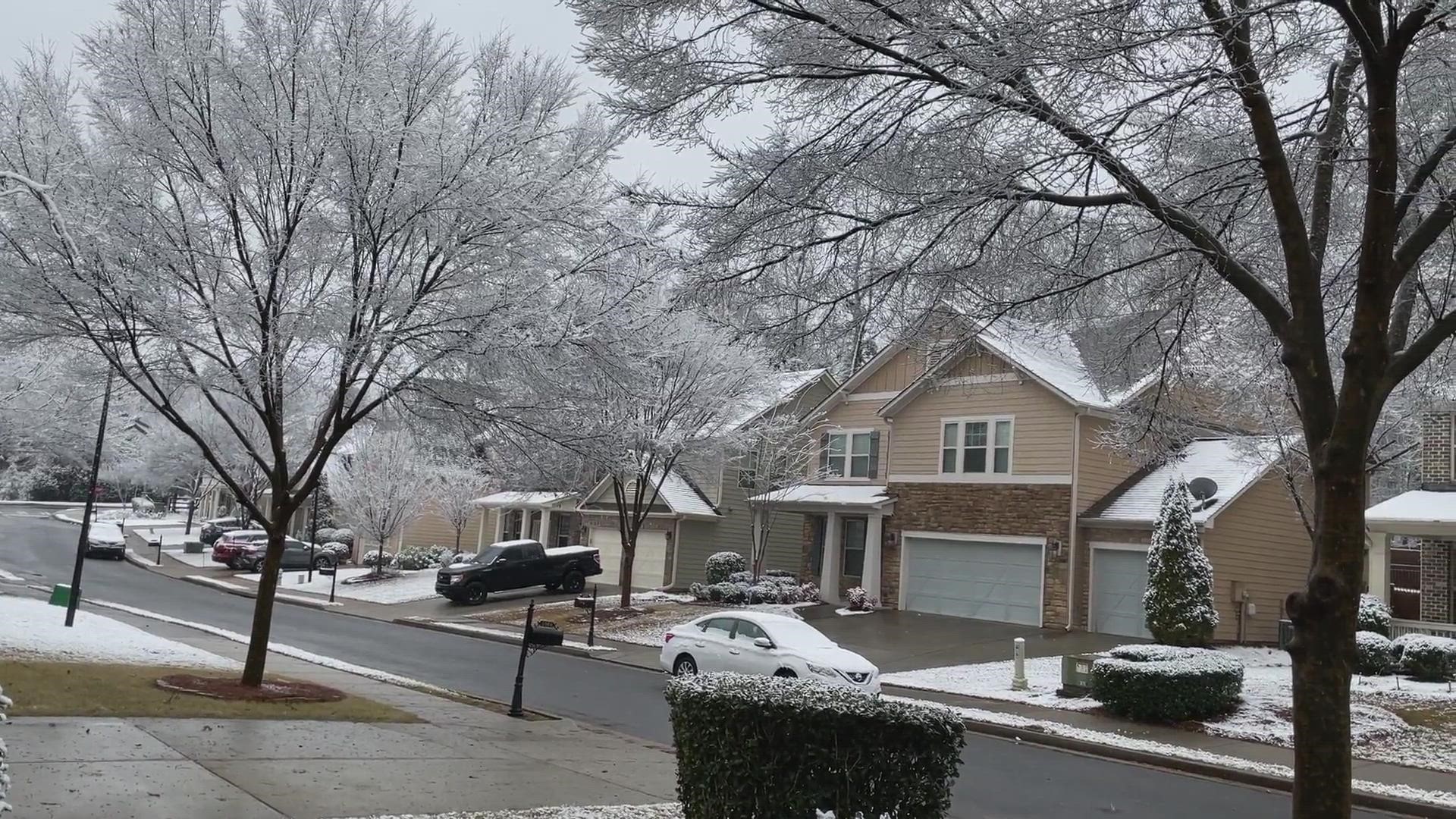
Will It Snow in Georgia in 2024? A Comprehensive Forecast
As winter approaches, one question lingers in the minds of many Georgians: Will it snow in Georgia in 2024? The prospect of a snow-covered landscape in the Peach State is always an exciting one, bringing with it a sense of wonder and a temporary respite from the usual Southern climate. However, predicting snowfall in Georgia is a complex endeavor, influenced by a multitude of atmospheric factors. This article delves into the meteorological intricacies that determine snowfall in Georgia, offering a detailed forecast for the upcoming year and examining historical trends to provide a comprehensive understanding of what to expect.
Understanding Georgia’s Climate and Snowfall Patterns
Georgia’s climate is generally classified as humid subtropical, characterized by hot summers and mild to cool winters. The state’s diverse topography, ranging from the Appalachian Mountains in the north to the coastal plains in the south, plays a significant role in shaping its regional weather patterns. Snowfall is more common in the northern parts of the state, particularly in the higher elevations of the mountains, while the southern regions experience snowfall less frequently. To accurately predict will it snow in Georgia in 2024, we must consider these regional variations.
Factors Influencing Snowfall
Several key factors contribute to the likelihood of snowfall in Georgia:
- Cold Air Masses: For snow to occur, a sufficiently cold air mass must be in place. These air masses typically originate from Canada or the Arctic and bring temperatures below freezing.
- Moisture: Adequate moisture is essential for precipitation. This moisture often comes from the Gulf of Mexico, which provides a source of humidity that can condense into snow.
- Atmospheric Lift: Air needs to rise and cool to form clouds and precipitation. This lift can be caused by various factors, such as frontal systems, low-pressure areas, or orographic lift (air rising over mountains).
- Temperature Profile: The temperature profile of the atmosphere is crucial. The air temperature must be at or below freezing from the cloud level to the ground for snow to reach the surface. If a layer of warm air exists near the ground, the snow may melt and turn into rain or sleet.
Historical Snowfall Trends in Georgia
Analyzing historical snowfall data provides valuable insights into Georgia’s snowfall patterns. While snowfall amounts vary significantly from year to year, certain trends emerge. For example, some years see multiple significant snow events, while others experience little to no snowfall. Looking back at past winters can help us gauge the potential for snowfall in the upcoming year and help answer the question: will it snow in Georgia in 2024?
Notable historical snowstorms in Georgia include the Blizzard of 1993, which brought record-breaking snowfall to the northern part of the state, and the snowstorm of January 2014, which caused widespread travel disruptions and power outages. These events highlight the potential for severe winter weather in Georgia and the importance of being prepared.
Regional Variations in Snowfall
As mentioned earlier, snowfall amounts vary significantly across Georgia. The northern mountains typically receive the most snowfall, with average annual accumulations ranging from several inches to over a foot. Cities like Blairsville and Clayton, located in the heart of the mountains, are among the snowiest places in the state. In contrast, the southern coastal plains rarely experience snowfall, with some years seeing no measurable snow at all. Atlanta, located in the central part of the state, typically receives a few inches of snow each year, although this can vary considerably.
Forecasting Snowfall for 2024
Predicting whether will it snow in Georgia in 2024 requires careful analysis of various weather models and forecasts. Meteorologists use sophisticated computer models to simulate atmospheric conditions and predict future weather patterns. These models take into account a wide range of factors, including temperature, humidity, wind speed, and atmospheric pressure. However, it’s important to note that weather forecasts are not always perfect, and there is always some degree of uncertainty involved, especially when predicting snowfall several months in advance.
As of [Current Date], long-range forecasts suggest a higher-than-average chance of colder temperatures in the Southeast during the winter of 2023-2024. This is partly due to the influence of [Mention relevant climate pattern, e.g., La Niña or El Niño]. However, cold temperatures alone are not enough to guarantee snowfall. Moisture and atmospheric lift are also necessary. Whether these conditions will align remains to be seen. Continue to check reliable sources for updates.
The Role of Climate Patterns
Large-scale climate patterns, such as El Niño and La Niña, can significantly influence winter weather in Georgia. El Niño, characterized by warmer-than-average sea surface temperatures in the central and eastern Pacific Ocean, tends to bring milder and wetter winters to the Southeast. La Niña, on the other hand, characterized by cooler-than-average sea surface temperatures in the same region, often leads to colder and drier winters. These patterns can affect the frequency and intensity of snowstorms in Georgia and provide clues about will it snow in Georgia in 2024.
Currently, [Mention current climate pattern, e.g., a weak La Niña] is in place, which could potentially favor colder temperatures in Georgia during the winter months. However, the strength and duration of these patterns can vary, and their impact on regional weather is not always consistent.
Preparing for Winter Weather in Georgia
Regardless of whether will it snow in Georgia in 2024, it’s always a good idea to be prepared for winter weather. Even a small amount of snow or ice can cause hazardous driving conditions and lead to accidents. Here are some tips for preparing for winter weather in Georgia:
- Check Your Vehicle: Make sure your vehicle is in good working condition, with properly inflated tires, adequate antifreeze, and a full tank of gas.
- Prepare a Winter Emergency Kit: Include items such as a flashlight, batteries, blankets, food, water, and a first-aid kit in your vehicle.
- Stay Informed: Monitor weather forecasts and advisories from reliable sources, such as the National Weather Service.
- Avoid Travel During Hazardous Conditions: If possible, avoid driving during snow or ice storms. If you must travel, drive slowly and cautiously.
- Protect Your Home: Insulate pipes, clear gutters, and trim tree branches that could fall on your home during a storm.
Additional Resources
For more information about winter weather safety and preparedness, consult the following resources:
- National Weather Service: https://www.weather.gov/
- Georgia Emergency Management Agency: https://gema.georgia.gov/
- The Weather Channel: https://weather.com/
Conclusion
The question of will it snow in Georgia in 2024 remains uncertain. While long-range forecasts suggest a higher-than-average chance of colder temperatures, snowfall requires a specific combination of cold air, moisture, and atmospheric lift. By staying informed about weather forecasts and taking appropriate precautions, Georgians can be prepared for whatever winter weather may bring. Remember to check reliable sources for updates as the winter season approaches. [See also: Georgia Winter Weather Preparedness Tips] Ultimately, whether we see a blanket of white across the Peach State in 2024 is up to Mother Nature. But with a little preparation and a watchful eye on the skies, we can all be ready for whatever comes our way.
